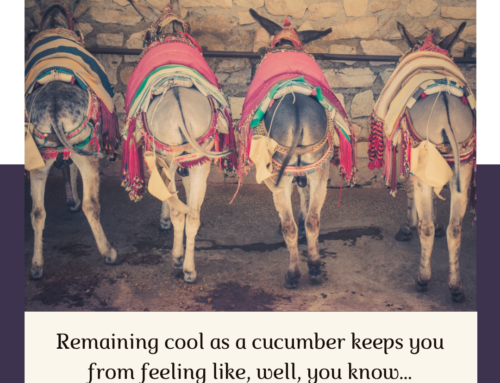Teaching (and Learning) Emotional Regulation
You can’t teach your child calming strategies when you are triggered yourself.
Based on an Article By Rebecca Branstetter, Ph.D.
You know that parenting meme that’s been doing the rounds recently, using Toy Story and Jurassic Park as fun metaphors for our moods at the start and end of each day? It got me thinking about how we parents kick off the day, all bright-eyed and bushy-tailed, ready to tackle challenges with a smile.
Maybe you wake up thinking, “it will be different today!” But as the sun gets closer to setting, your patience can start to run thin. You might find yourself a bit more snappy, irritable, more on edge. With these feelings, it is harder to control your responses when things don’t go as expected. And at the end of the evening, they rarely do! So what happens and how can we keep the Jurassic Park T-Rex at bay before bedtime?
I will borrow some wise words from Rebecca Branstetter, Ph. D. to explain. Branstetter differentiates between Wizard Brain and Lizard Brain to compare our different capacities to regulate emotions to solve challenges.
Lizard Brain Vs. Wizard Brain
Neither parent nor child wakes up in the morning planning to be a terrible lizard, right? Branstetter explains further, that when stress is triggered in either parent or child, two spooky sci-fi things happen (nope, I’m not talking about extracting-DNA-and-recreating-dinos kind of sci-fi. This is even spookier).
Branstetter’s Spooky Sci Fi Fact #1
We are evolutionarily pre-programmed to match others’ emotions before we can even mentally register that we are doing it. This means that stress and uncomfortable emotions like anxiety, anger, and sadness are highly contagious. We “catch” the stress from our kids, and our kids “catch” it from us. Y’all, the whole process takes milliseconds. When your kid flips out and gets angry because you calmly ask them to put away their dirty socks, your calm turns to anger before you can even register it consciously. When you are stressed out about an email that pops up on your phone from work and you feel tense, your child feels that same tension as if it were their own.
Branstetter’s Spooky Sci Fi Fact #2
All stress, big or small, real or imagined, registers the same way — DANGER! — and we go into the “brain stem,” the part of the brain responsible for survival.This primitive part of the brain literally does not know the difference between the stress of struggling with a math assignment or the stress of a saber-toothed tiger.Either way, the amygdala, the fear center of the brain, lights up like a Roman candle and we go into fight or flight mode (or the modern-day version: acting out or shutting down). With kiddos, I sometimes call it “lizard brain” because primitive responses to stress do not involve logic or thinking. All our “brain juice” (term I just made up) goes to survival and we don’t have any cognitive resources left for thinking straight.
Problem solving cannot occur in “lizard brain” mode. Yet, when our kids get stuck in the brain stem, it’s soooooo tempting to address them with logic, problem solving, or a valuable adult life lesson such as: “When a company advertises a product with raisins, it likely has raisins in it! So just eat it!” or, “It’s just a math worksheet. It will only take 10 minutes, so just calm down and finish it!” It doesn’t take much imagination to picture how these life lessons go over in those lizard brain moments. Yep, your child may go full Jurassic on you. Then, you instinctively go Jurassic on them and there’s two angry dinos in the room (see Spooky Sci-Fi fact #1).
Tapping Into the Wizard Brain
You might be thinking, “OK, great, so basically we are destined to trigger and re-trigger each other all day long?”
Nope! I have good news for you. You have a fully developed wizard brain (frontal lobe — the “stop and think” part of your brain that is built to pause and respond skillfully, with calmness. And the even better news is that calm emotions are also contagious!
When you come into a situation with calm, it triggers calm in your child. When you take a pause before responding to your child’s anger, their anger subsides. This process of up-regulating or down-regulating your child’s emotions is called “co-regulation.”
The Key: You can bring calm or chaos to a situation by how you respond.
And once both parties are calm, problem solving can begin. Our “wizard brains” (frontal lobes) are back online.But how do parents cultivate inner calm amid craziness? What sounds good in theory is much harder to do when you’ve been triggered.
The following strategy for keeping calm in a stressful situation with your child is simple, but it is not necessarily easy until you remember and practice this: Take care of yourself first. Escalated parents can’t de-escalate their children. Your calm teaches your child calm.
Wait! Don’t go!
This is not the part where I tell you to practice self-care: take up yoga, practice meditation, and carve out heaps of “me time.” Don’t get me wrong; self-care is great, but those are things you do “off the job” as a parent. They can lengthen your fuse, but the fuse is always still there.
The problem with self-care activities is that it’s hard to do them in the Jurassic parenting moment. You can’t just bail on your wailing, dysregulated kid and drive off to a yoga class right then and there. So, this is the part where I share what can you do “on the job” when the stressful moment is actively going down.
What To Do When the Lizard Attacks
1.First, become aware when you’re being triggered. Is it a bodily sensation, like a tight chest or clenched jaw? Or is it a thought like, “Why are they giving me such a hard time?” or “How many times do I have to tell them?” or “Why are they making such a big deal over nothing?” If you can catch the thought or feeling before you respond, that’s huge.
2.Second, practicing empathy is the fastest route to calming yourself and your child during a heated moment. Remind yourself that your child is in “brain stem” and in a moment of suffering, too. They aren’t giving you a hard time; they are having a hard time.
3.Third, in a Jurassic Moment, do a “one for me/one for you” breath before responding. One breath for me (I am having a hard time) and one breath for my child (this is hard for you, too). It helps me stay calm and helps model for my child how to pause before responding and how to empathize in challenging times.
And speaking of self-compassion, remember to give yourself self-compassion if you T-Rex out from time to time! If you lose your cool, it’s okay. It’s human. It happens, especially when we are under stress and have a shorter fuse than normal. Take the time to apologize — make it a teachable moment.
When you say, “I am sorry I yelled. I was feeling frustrated and next time I will take a few deep breaths,” you are teaching them what to do next time they are frustrated or make a mistake.
In the spirit of new intentions in the New Year, what can you take away to work with your wizard brain rather than your lizard brain? If you are looking for ways to expand your knowledge and practice new habits, our online learning platform is one way to take your learning to the next level!
Yours in the Journey,
Cara







